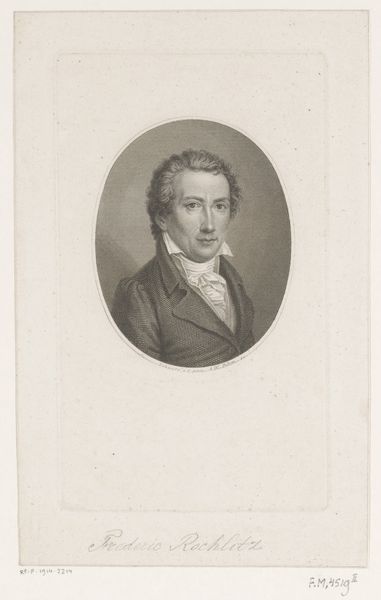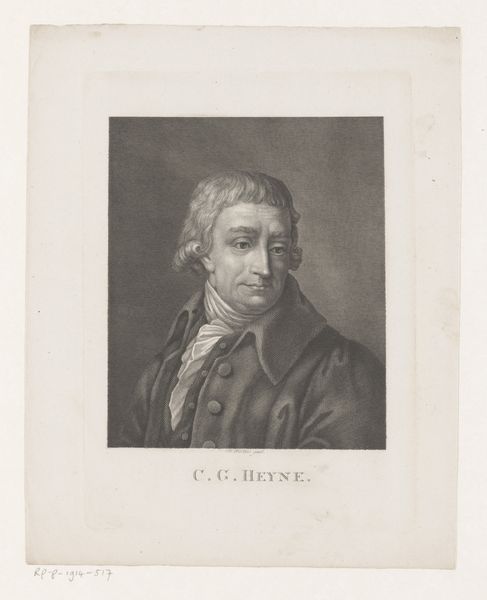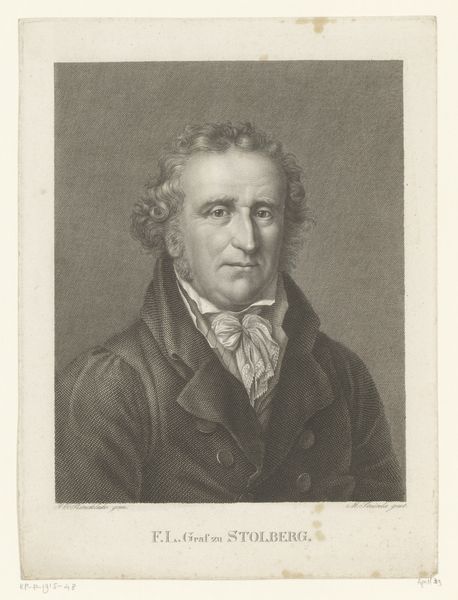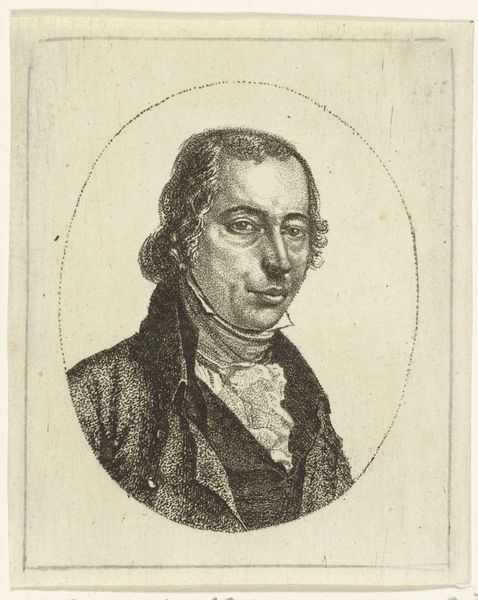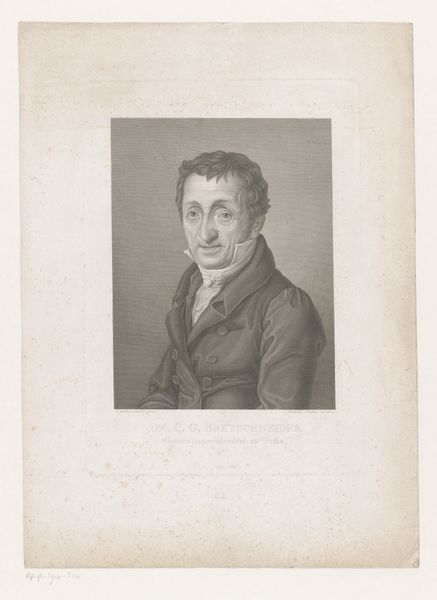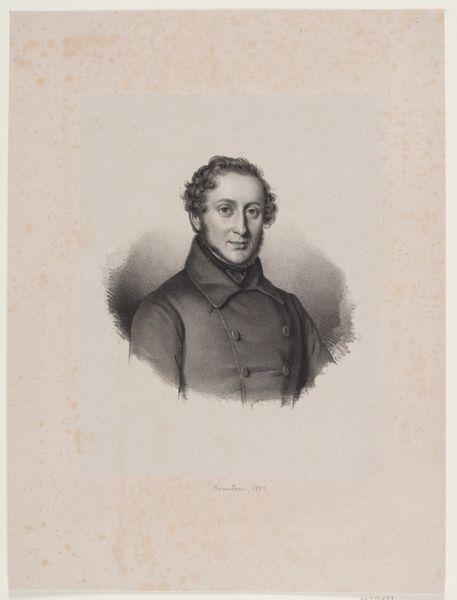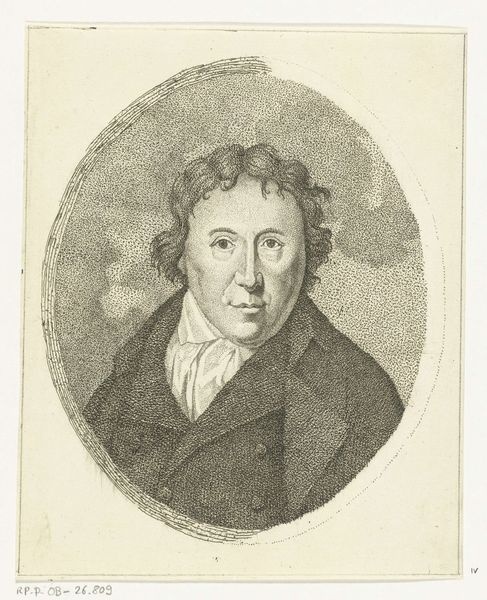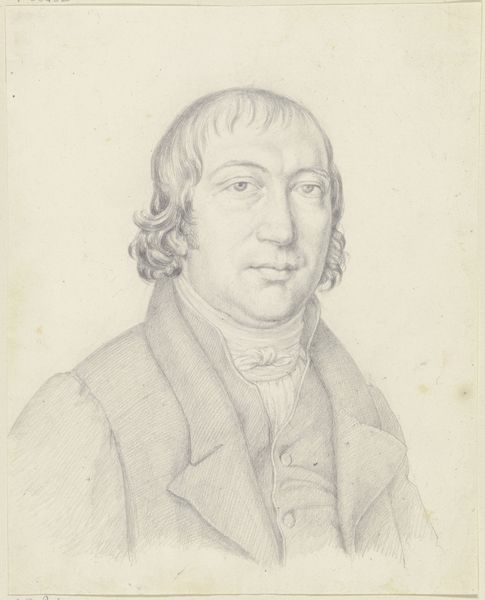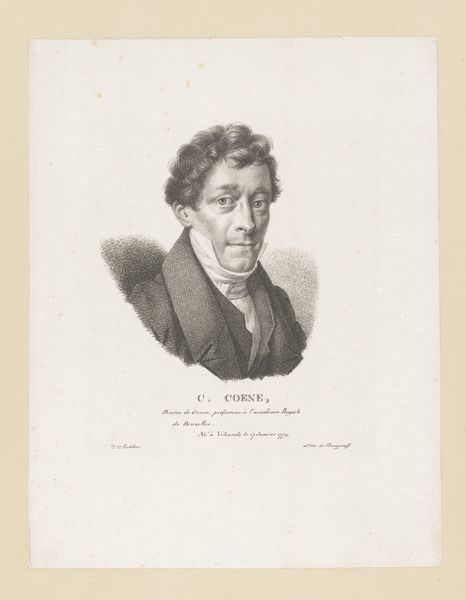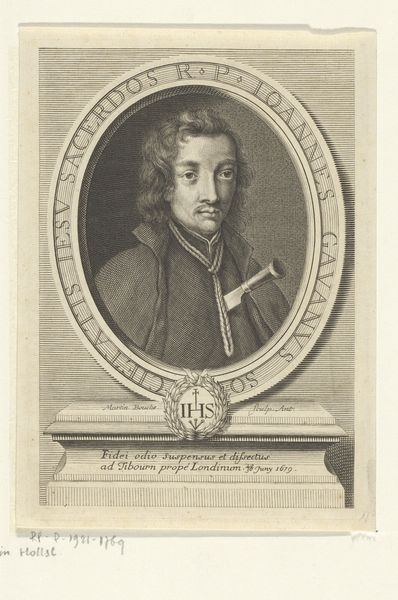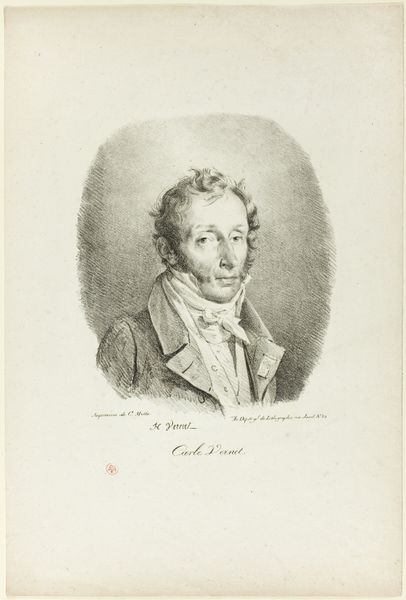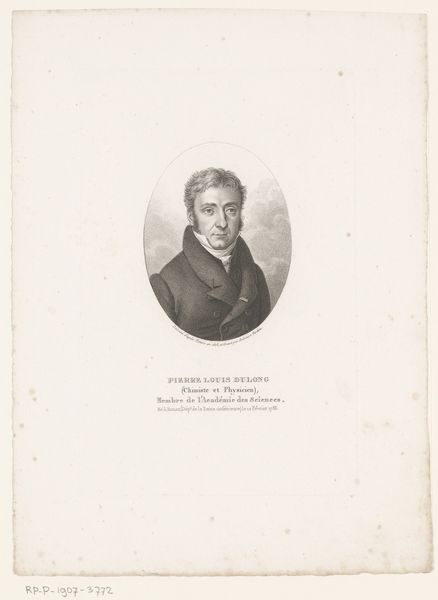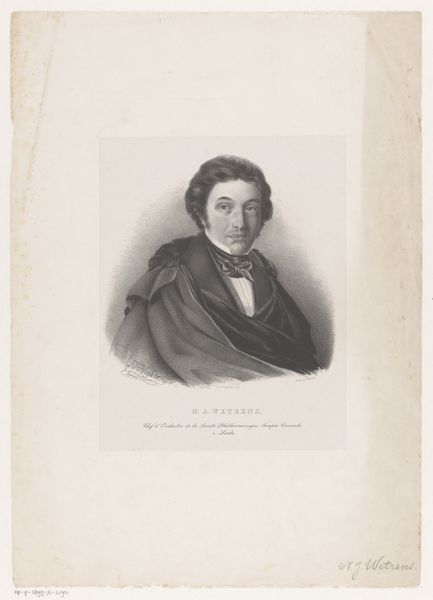
#
photo of handprinted image
#
yellowing background
#
photo restoration
#
old engraving style
#
archive photography
#
historical photography
#
digital photo altering
#
portrait reference
#
old-timey
#
19th century
Dimensions: height 200 mm, width 137 mm
Copyright: Rijks Museum: Open Domain
Editor: This is "Portrait of the Poet Ippolito Pindemonte" created between 1780 and 1834 by Felice Zuliani. It's a rather formal portrait, yet the texture of the printmaking process feels surprisingly modern. What can you tell me about this piece? Curator: From a materialist perspective, I'm immediately drawn to the production of this print. Consider the labor involved: the engraver meticulously carving the image onto a metal plate, in reverse, demanding tremendous skill and precision. It's not just about Zuliani’s artistry, but about the craft and the conditions of that craft. How do you think this process, the material labor, shapes our understanding of Pindemonte’s status as a poet? Editor: That's a fascinating way to think about it. It definitely elevates the portrait, associating Pindemonte with this intensive artistic process. The final product, made by someone through skilled labour, exists because someone values art in general and perhaps even Pindemonte himself. But I never considered the socio-economic implications before. Curator: Precisely! Engravings like this one served a specific purpose. They disseminated images, knowledge, and even social standing within a particular consumer market. Ownership or availability to see one implies an acceptance of or belonging to that socio-economic landscape. What would an analysis of paper quality and ink composition reveal, in terms of the means of production at the time? How would these specifics contribute to, or perhaps even subvert, conventional depictions of elite individuals like Pindemonte? Editor: It sounds like the artwork becomes less about the individual depicted, and more about a moment of industry. I didn't consider that art production creates access, opportunity, and community. Thank you, I now have new ways of interpreting art in social contexts. Curator: Yes, thinking through the materials and their context makes us confront these networks directly.
Comments
No comments
Be the first to comment and join the conversation on the ultimate creative platform.
